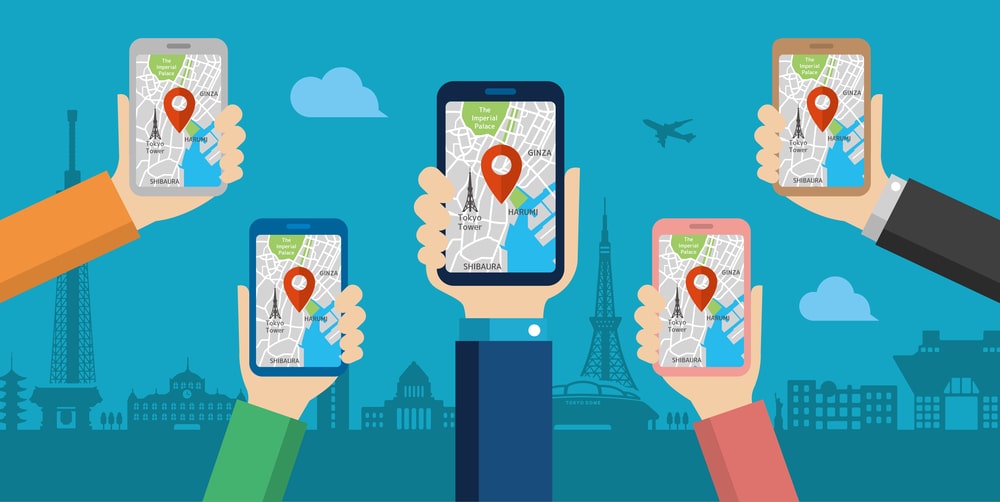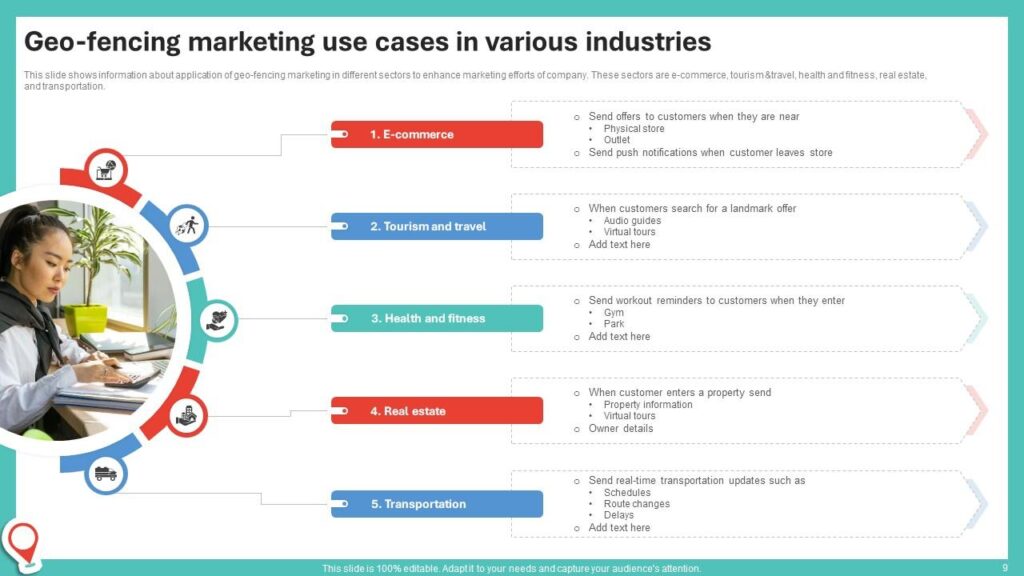 What is GEO in digital marketing? It’s using location data to deliver a specific message to your audience at the right time. It’s the difference between shouting into a crowded room and a quiet, targeted whisper. This approach makes your marketing incredibly relevant and effective, helping you connect with customers right where they are.
What is GEO in digital marketing? It’s using location data to deliver a specific message to your audience at the right time. It’s the difference between shouting into a crowded room and a quiet, targeted whisper. This approach makes your marketing incredibly relevant and effective, helping you connect with customers right where they are.
This article is brought to you by Digiswarm, your partner in harnessing the power of GEO marketing to turn clicks into customers. We’re here to help you start your journey to digital success.
What Is GEO in Digital Marketing?
At its core, GEO, or geographical marketing, refers to any marketing strategy that uses a person’s physical location to deliver targeted messages, content, or advertisements. Think of it as a smart, digital GPS for your marketing campaigns. Instead of casting a wide net and hoping to catch a few fish, you’re using a precise sonar system to pinpoint where the fish are and what kind of bait they’ll respond to. This ability to be timely and relevant is why GEO in Digital Marketing is so incredibly effective at driving foot traffic, boosting local sales, and building strong, personal connections with your audience.
The location data comes from various sources, including IP addresses, GPS signals from mobile devices, Wi-Fi connections, and even cellular tower triangulation. This isn’t just a static point on a map; it’s a dynamic signal that tells you a lot about a person’s context and needs. A core principle of GEO in Digital Marketing is making sure your message feels less like an ad and more like a helpful suggestion.
Geo-targeting vs. Geo-fencing: The Two Main Flavors of GEO in Digital Marketing
Before we dive deeper, let’s clear up two terms that often get confused. Think of geo-targeting and geo-fencing as siblings with different personalities. Both are vital components of any effective strategy for GEO in Digital Marketing.
Geo-targeting: The Broad Stroke of GEO in Digital Marketing
Geo-targeting is the older, more general sibling. It’s about reaching a broad, defined geographical area, like a country, city, or even a specific zip code. If you’re a clothing brand and you want to run an ad campaign for winter coats, you’d geo-target colder cities. It’s a foundational aspect of GEO in Digital Marketing, allowing you to segment your audience based on location.
Geo-fencing: The Precise Fence of GEO in Digital Marketing
Geo-fencing is the younger, more focused sibling. It’s about drawing a virtual, digital “fence” around a very specific area, like a competitor’s store, a concert venue, or your own business. When a user with a geo-fencing-enabled app on their phone enters or exits that virtual boundary, it triggers a pre-set action—like sending a push notification with a special offer. This hyper-specific application of GEO in Digital Marketing is designed to capture attention at a pivotal moment.
The Undeniable Benefits of GEO in Digital Marketing
So, why should you even bother with all this? Because it offers a level of personalization and efficiency that traditional marketing can only dream of. The value of GEO in Digital Marketing lies in its ability to directly influence behavior and drive results.
Unmatched Relevance and Personalization
When you use location data, you can tailor your message to the immediate context of your customer. If they’re at a sports stadium, an ad for your team merchandise is incredibly relevant. This deep level of personalization is a key benefit of GEO in Digital Marketing.
Boosting Conversions and Foot Traffic
When your message is relevant, the user is far more likely to take action, whether that’s clicking a link, downloading an app, or walking through your doors. By using GEO in Digital Marketing, you make it easier for people to find you, directly influencing their decision-making process and increasing your conversion rates.
A Competitive Edge for Local Businesses
For local businesses, a smart GEO in Digital Marketing strategy is a superpower. You can compete with larger brands by focusing on your immediate surroundings, attracting nearby customers who are actively looking for what you offer. It’s a way to become a big fish in your own small pond.
Popular Applications of GEO in Digital Marketing
The world of GEO in Digital Marketing is vast, with many different applications. Here are some of the most effective strategies that businesses are using today to connect with their audience.
Local SEO: Your Digital Welcome Mat
You can’t talk about GEO in Digital Marketing without mentioning Local SEO. This is the art and science of optimizing your online presence to attract more business from relevant local searches. It’s about making sure your business shows up when people in your area search for a “plumber near me” or “best coffee shop in [your city].”
Proximity Marketing: The Digital Lighthouse
This is the most direct form of GEO in Digital Marketing. It’s all about communicating with consumers who are within a very close proximity to your physical location. It often involves technologies like Bluetooth beacons or Wi-Fi to send messages directly to a user’s smartphone.
Geo-conquesting: A Bold Strategy
This is a more aggressive, but highly effective, strategy. Geo-conquesting is all about using geo-fencing to target your competitors’ locations. For a bold approach to GEO in Digital Marketing, you can set up a virtual fence around a competitor’s store and deliver a compelling offer to customers who enter that zone.
Weather-Based Marketing: The Contextual Approach
This is where GEO in Digital Marketing gets even smarter. By combining location data with real-time weather information, you can create highly relevant and timely campaigns. For example, a beverage company could run an ad for hot cocoa only in areas where the temperature drops below freezing.
How to Get Started with GEO in Digital Marketing
Ready to dive in? Here’s a simple roadmap to help you implement a powerful strategy for GEO in Digital Marketing. It’s easier than you think to begin leveraging location data.
Step 1: Define Your Goals
What do you want to achieve? Are you trying to increase foot traffic to a physical store? Boost online sales in a specific region? Get more local reviews? Your strategy for GEO in Digital Marketing must align with a clear objective.
Step 2: Gather and Analyze Your Data
Start with the data you already have. Your website analytics can show you where your visitors are coming from. You can also use tools like Google Analytics to dig deeper into the geographical demographics of your audience. This information is the fuel for any successful GEO in Digital Marketing campaign.
Step 3: Choose Your Platforms
Not every platform is a good fit for GEO in Digital Marketing. Google Ads and social media platforms like Facebook and Instagram are excellent starting points, as they offer robust geo-targeting features. For more advanced strategies, you might need specialized geo-fencing software.
Step 4: Create Compelling, Location-Specific Content
Your ad copy and creative should feel personal and relevant. Don’t just show a generic ad. Instead, say “Hey, Dehradun! Enjoy a refreshing drink at our new cafe!” It’s this personal touch that makes a campaign based on GEO in Digital Marketing so effective.
Why GEO Matters for Marketers
GEO transforms marketing from a blanket approach into a precise, highly effective tool by leveraging a customer’s real-time physical location:
-
Unmatched Relevance: GEO ensures messages are not just seen but immediately applicable. For instance, sending a coupon for a nearby shop to someone on that street is far more engaging than a generic ad at home.
-
Significantly Increased ROI: GEO focuses ad spend on targeted areas, eliminating wasted reach and ensuring every dollar impacts potential customers directly.
-
Directly Drives Real-World Action: This strategy bridges digital interaction and real-world behavior, leading to store visits, event attendance, and calls vital for local businesses.
-
A Level Playing Field: GEO marketing allows smaller businesses to compete with large brands within their local region, dominating nearby markets where broad campaigns cannot.
-
Deep Contextual Insights: Marketers learn not just user demographics but habits, routines, and interests, enabling smarter, more personalized outreach.
The Future of GEO in Digital Marketing
GEO is evolving rapidly, ushered by advances like augmented reality (AR) and indoor positioning systems (IPS). The future could see museum apps giving real-time AR tours based on a visitor’s precise location.
Key Considerations:
-
Transparency and Trust: As geotech grows, businesses must be transparent with how they use location data and always prioritize user consent.
-
Building Trust: This transparency is essential for effective customer relations and forms the foundation of successful, long-term marketing.
-
Conclusion
In the end, GEO in digital marketing isn’t just a tactic; it’s a fundamental shift in how we think about connecting with customers. It’s about moving from a “spray and pray” approach to a “right place, right time” philosophy. By understanding and embracing geographical data, you can create campaigns that are not only more effective but also more human, personal, and respectful. For businesses in a bustling, competitive market like Dehradun, a smart, geo-focused strategy can be the key to standing out from the crowd. If you need expert guidance to craft a powerful, location-based strategy, a great digital marketing agency in Dehradun can help you navigate this exciting frontier and turn your business’s geographical advantage into a competitive edge.


